In early September this arrived in the post:

Fibre was now available to order where I live!
Order & Installation Process
I placed the order online. I chose the 1 Gb service (with the hefty £135 p/m price tag!). The entire online process was very straightforward. Within about a week I was booked in for a pre-visit by one of the installation engineers. They turned up, confirmed where I wanted the ONT box to be installed and also worked out where the fibre would be coming into the house.
2 weeks later, and the fibre installation engineers turned up to install the service. The fibre itself comes out of the ducting in the road, and then goes to an external distribution (splice) box:
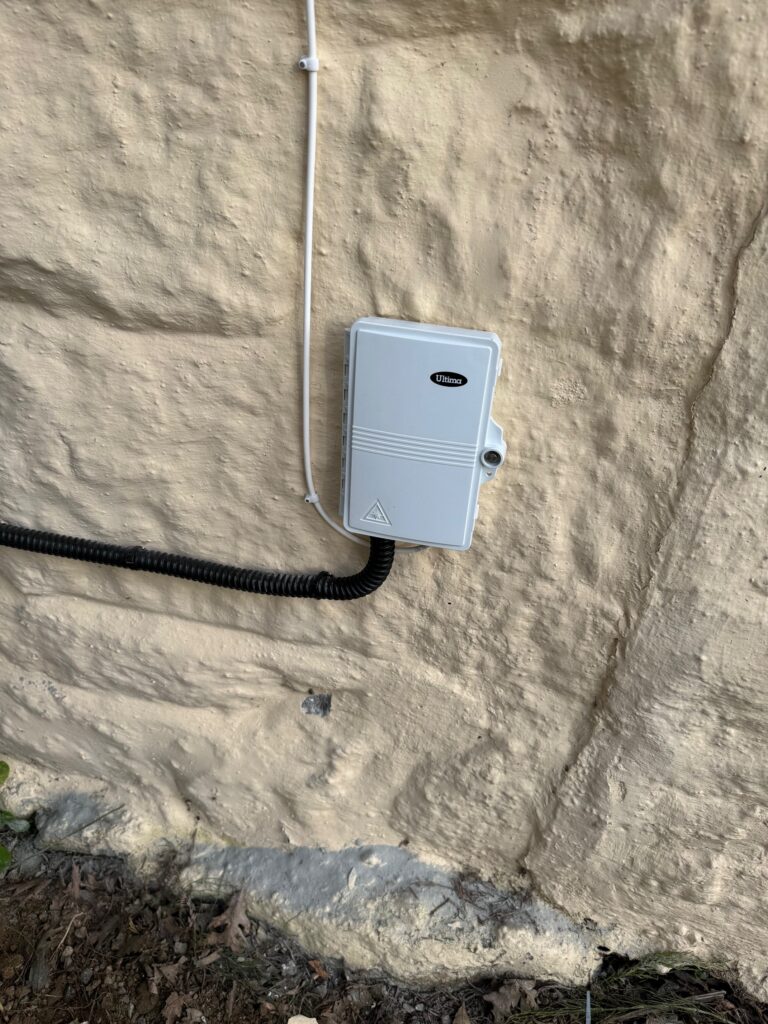
The white cable then ran a fair way along the outside of the house to the location where the ONT is installed internally. This is all handled by the installation team and the quality of the external workmanship is very neat & tidy.
This is the ONT installed inside:
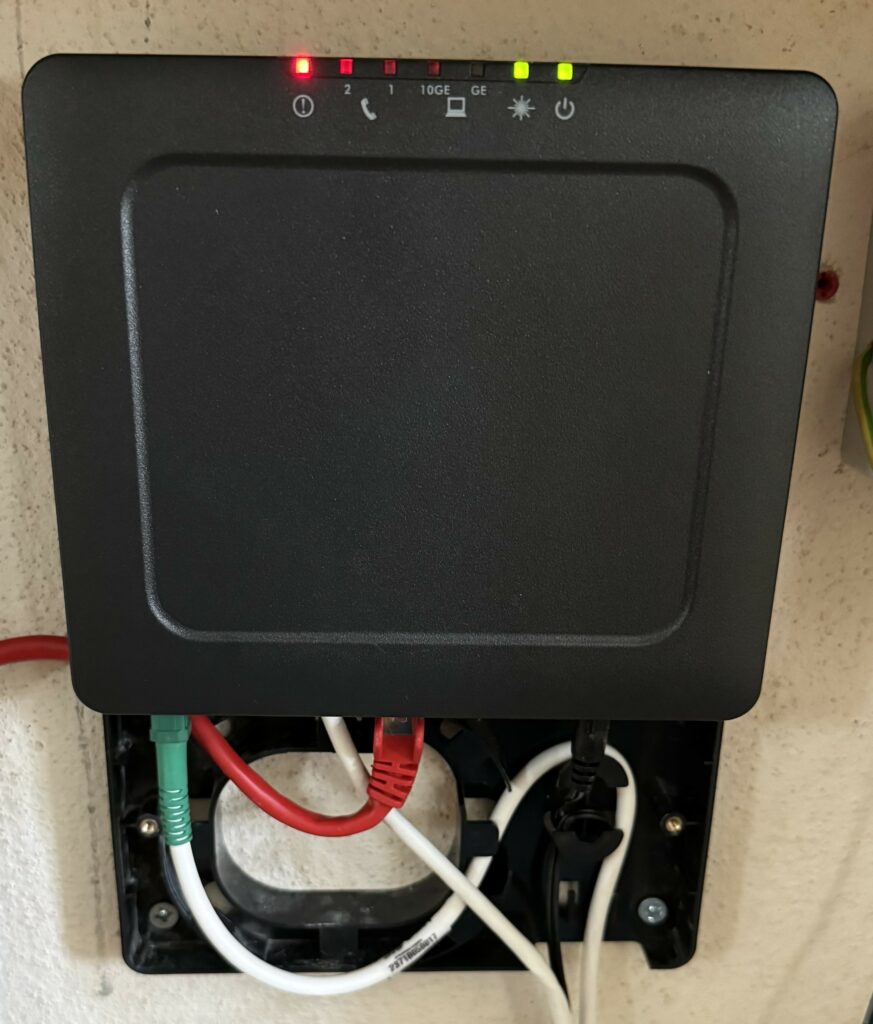
The ONT requires a power socket, so there needs to be one nearby. The white fibre cable comes into the house and then attaches using the green connector on the left. The ethernet cable then needs to connect to your actual router, which does the connection using PPPoE. The ONT also serves as the termination point for your phone line – the copper line is disconnected as part of the installation so your home phone wiring is connected into it.
Here is a shot of the underside of the ONT:
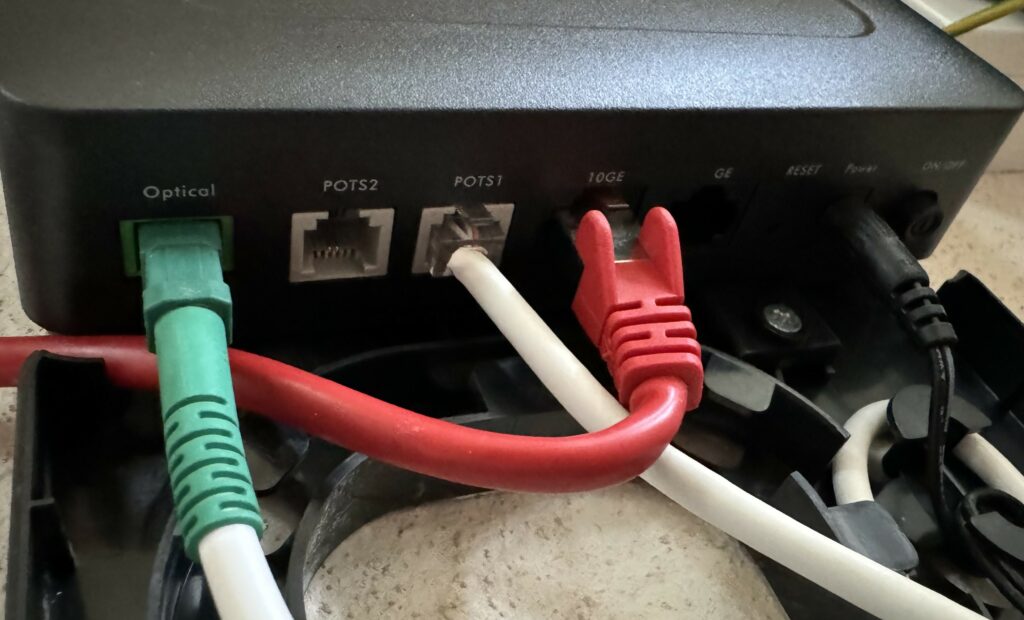
POTS1/POTS2 are your phone lines – the ONT seemingly supports up to 2 separate external phone lines should you have them. What interested me the most about this picture, though, is the “10GE” port – is that 10 Gigabit Ethernet? (spoiler: yes, it is!). More on that later.
There is a black cover that goes over the bottom of the ONT, so it looks tidy once the cover is on.
Initial Speedtest
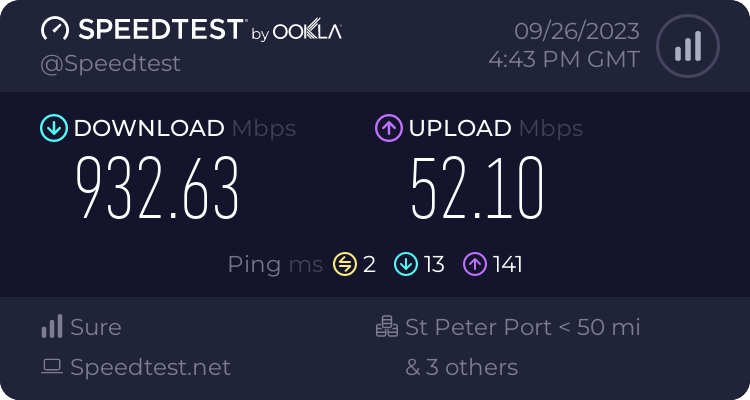
Pretty impressive! 930Mbps is about the limit of what is possible when connected using Gigabit ethernet. This is due to the overhead involved in the ethernet frame and the TCP/IP stack. Also, take a look at that very good 2ms latency figure.
Some more tests below:
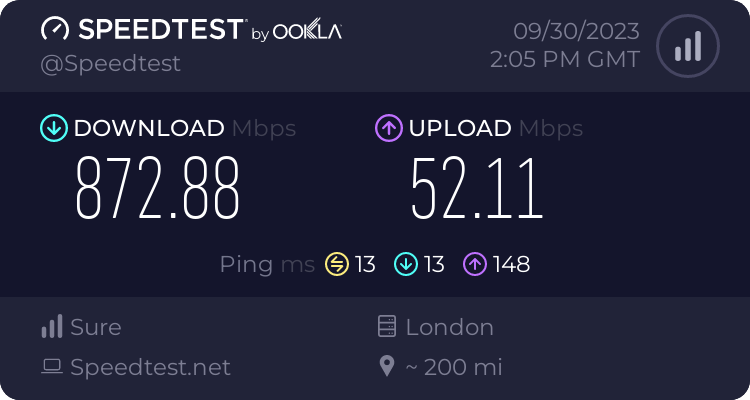
This time, I used a speedtest server in London rather than on-island. This resulted in a slightly slower result which is to be expected. It’s still very fast though.
Now a test of an actual download:

Using Steam to download a game update, I got a peak of 878Mbps.
Connecting using 2.5Gb ethernet
The vast majority of Guernsey Fibre users are likely to be using 1 gigabit ethernet between the ONT and their router, and then 1 gigabit ethernet on the LAN side of their house. However, the ’10GE’ port piqued my interest. So I purchased a couple of 2.5Gbe PCI-E cards to slot into my server, and connected it to see if it would sync up:
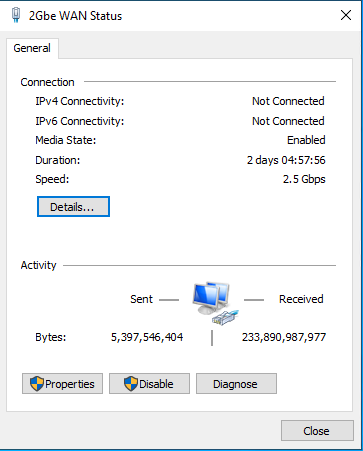
Answer: yes it does! The 10GE port is capable of 2.5Gbps, therefore I can only assume that it is also capable of 5Gbps and also 10Gbps BASE-T ethernet.
This is a massive assumption, but is the underlying fibre service actually XG-PON (i.e. 10Gig fibre)? and hence the ONT has a 10GE port for future proofing, in case Sure offer a service faster than 1Gig? Such a service is unlikely to be necessary for residential users, but some business may be able to take advantage of it, if such a service did exist.
Speedtesting with 2.5Gb ethernet
I also connected the LAN side of my router up using 2.5Gb ethernet, so the entire path from ONT to Router to PC was running at 2.5Gb.
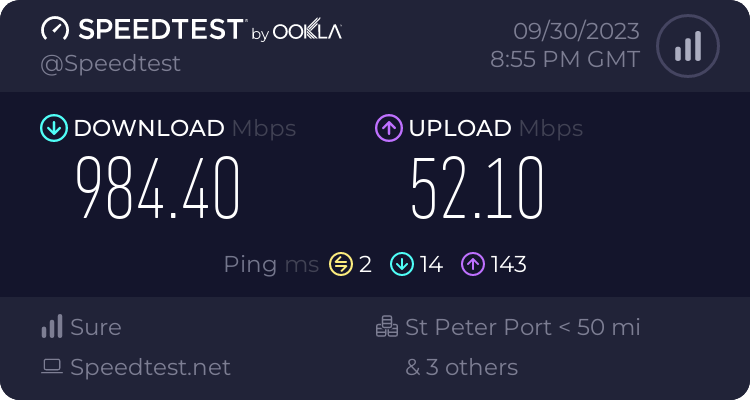
This result gets very close to the headline speed of 1 gigabit.
I should also point out a disclaimer: I am using virtualised OPNSense as a router, and it is notoriously poor at handling PPPoE at very high throughput, even with fast hardware. Therefore, it is entirely possible that my router is the limiting factor at this point.
Update: For a more accurate speedtest result which isn’t as limited by my router, see the later post here: https://www.fastinternetblog.uk/?p=438
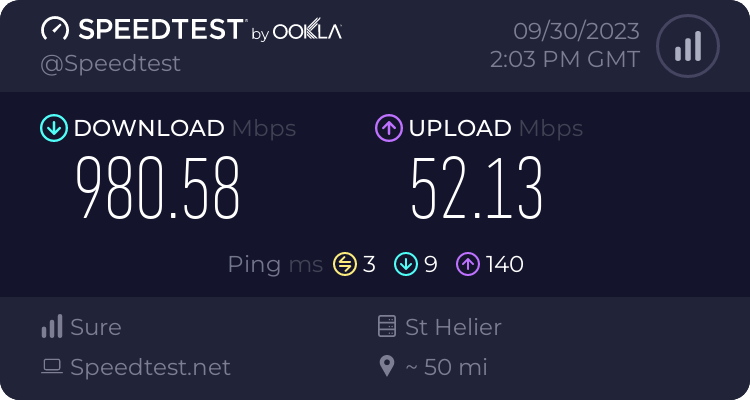
Even to Jersey, the speed remains very high at ~980Mbps.
Conclusions
Overall, I am very impressed with the service. The installation was handled extremely efficiently. The headline throughput speeds are as claimed, and real-world download performance (e.g. Steam, etc) is very acceptable around 800-900Mbps.
My only minor gripe, at this point, is the upload speeds. 50Mbps upload on a service costing £135 p/m is too low, in my opinion. Sure’s “Pro Fibre” service has a speed of 1Gig down/200Mbps up, but this costs an eye-watering £213 p/m. The residential 1Gig service should have a 100Mbps upload speed. I suspect it’s limited in this way so that if you want or need the higher upload speeds (i.e. businesses) you are forced to pay nearly double the amount.
When I first got broadband in Guernsey, it was a 1Mbps ADSL connection (in 2004). In 19 years that speed has increased by 1000x. What speeds will we be getting in 2043, I wonder?
